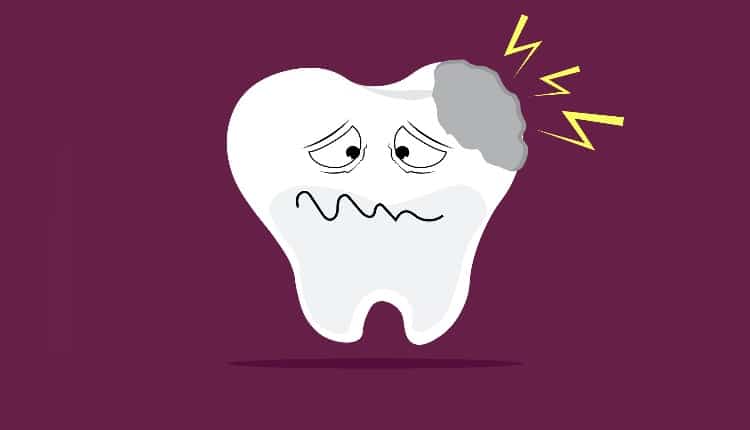
Dentinal hypersensitivity (DHS) is characterized by fleeting, sharp pain to a tooth or teeth caused by an external thermal, tactile, or chemical stimulus. The pain felt in the area of DHS should disappear immediately once the external stimulus is removed; however the intensity may vary based on the amount of dentinal exposure. A variety of terms may be interchanged with DHS, including: dentinal sensitivity, cervical hypersensitivity/sensitivity, cemental hypersensitivity/ sensitivity, and root hypersensitivity/sensitivity. The prevalence of DHS is reported to be between 3% and 98%. This wide range in prevalence is likely due to the variability in how studies define and assess DHS through questionnaires and/or clinical examinations. While DHS affects all ages, the peak occurrence is generally in middle-aged adults. DHS can impact all teeth and surfaces; however, it most commonly affects canines, first premolars, and the cervical margins on the facials of teeth.
Photo Credit: laflor / E+

Etiology Remains Mysterious
The exact pathogenesis of DHS is unclear. In vitro, in situ, and epidemiological studies currently propose that exposed dentinal tubules respond to external stimuli and ultimately affect the dental pulp nerve. Multiple theories, such as direct innervation theory, odontoblast receptor theory, and Brännström’s hydrodynamic theory, are proposed to describe the mechanism of DHS. Each theory has limitations and does not account for all pain associated with DHS. The most widely accepted theory is the Brännström’s hydrodynamic theory, which proposes that a stimulus—thermal, mechanical, chemical, or evaporative—strikes exposed dentinal tubules, causing a movement and change in the flow rate of the dentin fluid and generating an action potential in the nerves. This ultimately passes to the brain and produces pain. Research has found that when dentinal tubules are sensitive, they are wider and eight times more numerous than nonsensitive dentinal tubules.
Photo Credit: LightFieldStudios / iStock / Getty Images Plus

Diagnosis of Dentinal Hypersensitivity
Diagnosing DHS is highly subjective in nature and often difficult to determine. There are a number of conditions presenting with similar characteristics and confounding problems that make DHS diagnosis challenging. It is critical to determine a correct diagnosis of DHS to appropriately and effectively relieve symptoms and treat DHS. There is a lack in universally accepted guidelines for differential diagnosis of DHS and treatment; therefore, a thorough history, clinical examination, and other diagnostic tests are needed to determine if a patient has DHS.
Photo Credit: Fedeni / iStock / Getty Images Plus

Health History
During the dental appointment, the oral health professional should learn about the patient’s chief concern and obtain an extensive history regarding that concern. Oral health professionals should ask questions to elicit understanding of the problem and conduct other examinations to assess for DHS and differentiate between other conditions. The responses to these questions will assist the oral health professional in differentiating conditions. For example, if the patient states that the pain is continuous, nontransient, spontaneous, or not caused by an external stimulus, then conditions other than DHS need to be considered.
Photo Credit: Tero Vesalainen / iStock / Getty Images Plus

Provide Relief
Following the diagnosis of DHS, oral health professionals should suggest treatment options based on the extent and severity of the problem. There are no universally used treatment modalities and treatment should be based on the patient’s needs, ease of use, and scientific evidence. Treatment options include patient education to address predisposing etiological issues and behavioral control, noninvasive treatments for relief, and, potentially, restorative and surgical treatment. Treatment options can first begin with inexpensive, noninvasive, and easy-to-perform options. If those options do not provide relief, then more invasive measures may need to be considered.
Photo Credit: simonkr / E+

Educating Patients
Patient education is a critical step in relief from DHS. This instruction should be tailored to each patient based on the etiological factors predisposing him/her to DHS and external stimulus causing the DHS. Education may include techniques in proper self-care, recommendation of product(s) for relief, nutritional counseling, or a combination of all of these. If possible, a reduction or elimination of the predisposing factors leading to DHS should be considered to prevent further progression of erosion, attrition, and recession.

